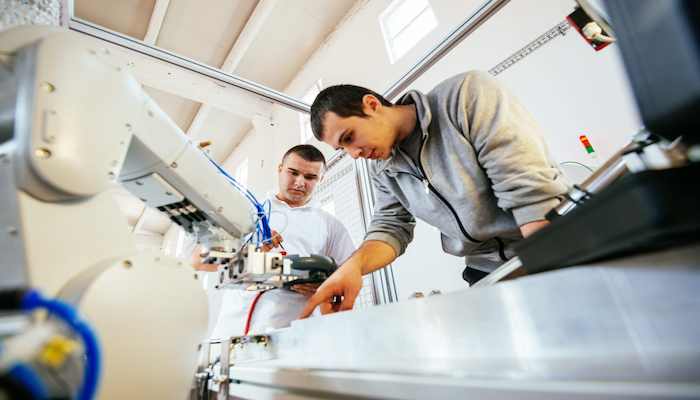News and Events
The robotics industry is constantly changing and evolving. New robotics technologies and developments in automation are quickly creating exciting career opportunities at every education level – from micro-credentials to PhDs. Here is where you can learn more about robotics careers in manufacturing and how these new technologies are benefiting workers


NEWS
What Can Robotics Do For Me?
February 8, 2021As we’ve seen, the array of jobs available in such a broad variety of industries means that if you’re in the market for a great career, robotics can do a lot for you. Wherever robots are implemented, the opportunities multiply. This is not just true in the workplace but in lots of other areas of your life, too. Not only are robots ready to do even more for us, but you might also be surprised by what robots are already doing.
Robots in Manufacturing
The area of ARM’s primary concern is manufacturing, which has seen tremendous growth in recent years, along with being the first industry to employ robots at large scale. We've all seen pictures of the rows of robotic arms making cars and airplanes, but worker safety has moved robots into other manufacturing areas as well. Welding is another perfect application for robots, as a potential danger to humans can be entirely avoided, so it should be no surprise that this makes up around 29% of the manufacturing robots currently on the job. Different manufacturing industries are beginning to use robots as well, such as textiles, commercial painters, assemblers, fabricators, and more.
Robots in Agriculture
Since so much of farming involves routine jobs that robots can do more efficiently than any human, activities like surveying, tractor-driving, and cutting, pruning, and harvesting crops are all jobs currently done by robots. There are even robots involved in the wine-making business, helping to maintain the vineyards and helping keep the grapes plump and juicy.
Robots in Logistics
If you ordered something from an online retailer, there’s a good chance that at least part of the journey of that item to your door was assisted by robots. You don’t even need to include the ai chatbots running on those retailers’ websites to see how many robots there are in the logistics industry, from monitoring the merchandise to fetching items to cleaning the delivery vehicles. Ordered something from Amazon lately? They have 200,000 robots currently at work in their warehouses.
Robots in the Military
Keeping you safe right now are dozens of different varieties of defense robots. The most common robot employed by the US military is the unmanned aerial vehicle (UAV), conducting reconnaissance from extremely high altitudes. Military robotics programs also use unmanned robots in the detection and disposal of explosives in civilian areas or warzones, in addition to clearing minefields and venturing into otherwise dangerous terrain.
Robots in Healthcare
We don’t have to wait for the future to arrive to get the benefit of robots helping out in times of need. As we’ve seen in recent months, robots can be deployed to disinfect patient rooms efficiently and without the need for a human to risk infection (it’s like the robot vacuum you have at home, except supercharged). Robots are also assisting in the routine monitoring of patients’ vital signs while nurse and physician attention can be directed to more pressing matters that require a human touch. Robots are great at repetitive, simple tasks, which makes them ideal for healthcare manufacturing, like the careful creation of vaccines.
Robots Making Jobs
One of the best things robots are doing right now for us is creating opportunities for great careers as operators, technicians, and more. You can learn more at roboticscareer.org.


